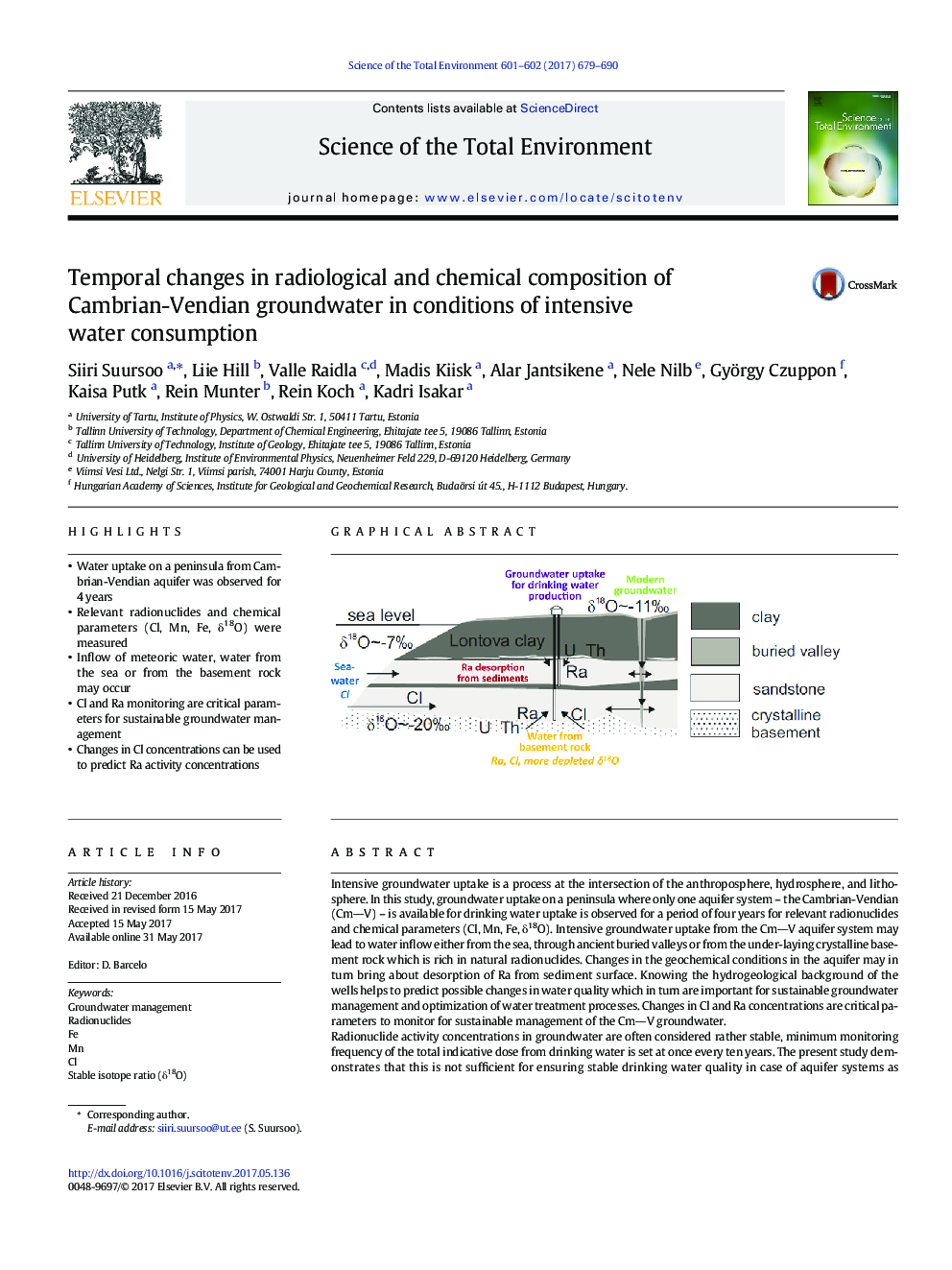| کد مقاله | کد نشریه | سال انتشار | مقاله انگلیسی | نسخه تمام متن |
|---|---|---|---|---|
| 5750424 | 1619697 | 2017 | 12 صفحه PDF | دانلود رایگان |
- Water uptake on a peninsula from Cambrian-Vendian aquifer was observed for 4Â years
- Relevant radionuclides and chemical parameters (Cl, Mn, Fe, δ18O) were measured
- Inflow of meteoric water, water from the sea or from the basement rock may occur
- Cl and Ra monitoring are critical parameters for sustainable groundwater management
- Changes in Cl concentrations can be used to predict Ra activity concentrations
Intensive groundwater uptake is a process at the intersection of the anthroposphere, hydrosphere, and lithosphere. In this study, groundwater uptake on a peninsula where only one aquifer system - the Cambrian-Vendian (CmV) - is available for drinking water uptake is observed for a period of four years for relevant radionuclides and chemical parameters (Cl, Mn, Fe, δ18O). Intensive groundwater uptake from the CmV aquifer system may lead to water inflow either from the sea, through ancient buried valleys or from the under-laying crystalline basement rock which is rich in natural radionuclides. Changes in the geochemical conditions in the aquifer may in turn bring about desorption of Ra from sediment surface. Knowing the hydrogeological background of the wells helps to predict possible changes in water quality which in turn are important for sustainable groundwater management and optimization of water treatment processes. Changes in Cl and Ra concentrations are critical parameters to monitor for sustainable management of the CmV groundwater.Radionuclide activity concentrations in groundwater are often considered rather stable, minimum monitoring frequency of the total indicative dose from drinking water is set at once every ten years. The present study demonstrates that this is not sufficient for ensuring stable drinking water quality in case of aquifer systems as sensitive as the CmV aquifer system. Changes in Cl concentrations can be used as a tool to predict Ra activity concentrations and distribute the production between different wells opening to the same aquifer system.
132
Journal: Science of The Total Environment - Volumes 601â602, 1 December 2017, Pages 679-690
